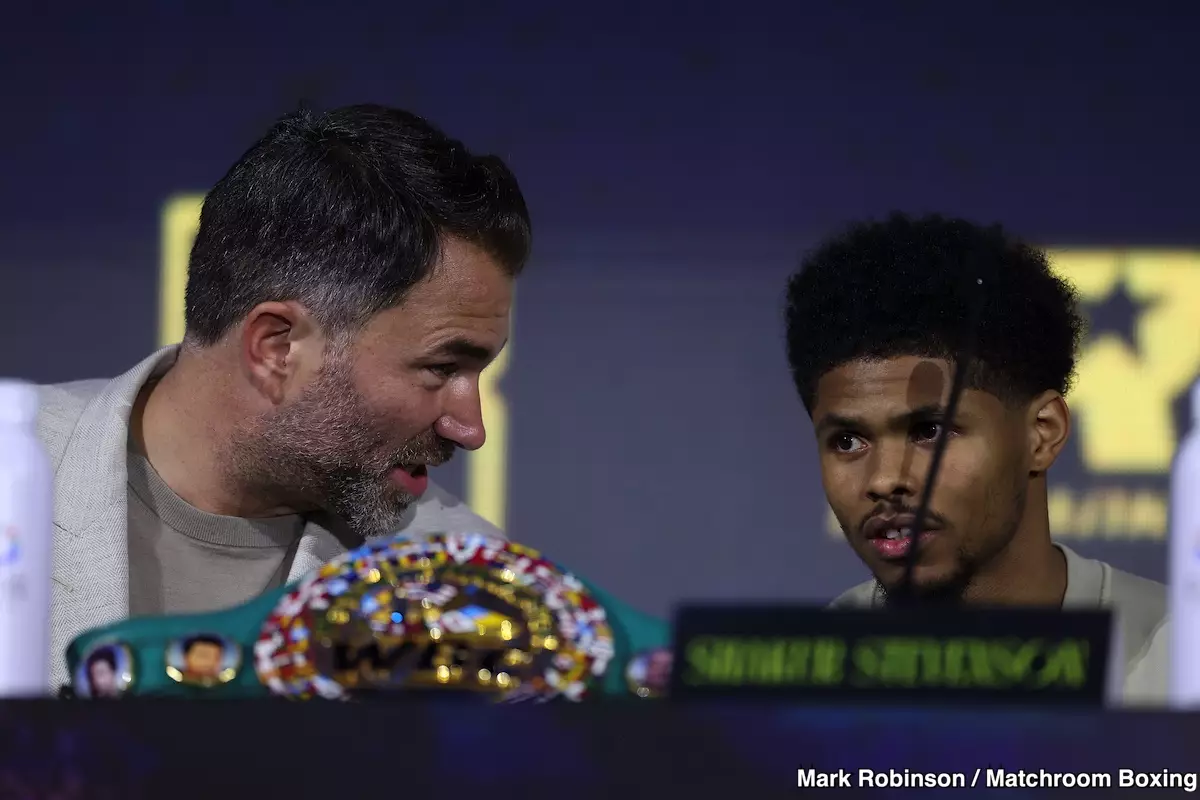In the world of boxing, comparisons between fighters are as common as the fists they throw. Promoter Eddie Hearn recently made headlines by likening the current WBC lightweight champion, Shakur Stevenson, to the great Sugar Ray Leonard. While Hearn’s enthusiasm and promotional zeal are commendable, the comparison raises eyebrows, inviting a deeper examination of both fighters’ careers and legacies. This juxtaposition prompts an essential question: are we witnessing boxing hyperbole, or is there true merit in Hearn’s claims regarding Stevenson’s potential?
To understand the gravity of Eddie Hearn’s assertion, it is crucial to appreciate the illustrious career of Sugar Ray Leonard. Leonard was not just a champion; he was a groundbreaking athlete who fought legendary opponents, including Roberto Duran and Tommy Hearns, often in thrilling bouts that defined the sport in the 1980s. By the age of 27, Leonard had already established his legacy, not only through titles earned but through the sheer electric energy he brought to the ring.
Comparing Stevenson, who boasts a solid professional record of 22 wins with 10 knockouts, to a fighter of Leonard’s caliber seems an oversimplification. Shakur’s ability is undeniable, and his victories underscore his potential, but the question remains: can he emulate the legacy of a fighter renowned for his charisma and historic bouts? If Stevenson truly embodied the greatness associated with Leonard, one would expect him to pursue and secure bouts against the best fighters in his division, particularly as he approaches a milestone like turning 28.
Eddie Hearn has touted Stevenson as a three-division world champion, but championships alone do not dictate a fighter’s greatness. While Stevenson’s skills are commendable, he currently finds himself defending against a replacement opponent, Josh Padley, whose record, though impressive at 15-0, lacks the narrative weight of the fighters Leonard faced. Shakur has been criticized for his recent matchmaking choices, which raises concerns about his level of competition. If he aspires to Leonard’s level of greatness, then the bar must be set decidedly higher.
Moreover, Hearn’s assertion that Stevenson is among the greatest pound-for-pound fighters today is debatable considering the caliber of opposition he has faced. If Stevenson wishes to solidify his place among boxing’s elite, he must seek out high-stakes fights that can showcase his abilities. With his youthfulness on his side, the expectation is for him to not only perform but to elevate the sport itself.
The concept of legacy in boxing is multi-faceted. It is built upon not just victories but the manner in which those victories are achieved and the caliber of the opponents faced. Sugar Ray Leonard’s legacy thrives on memorable bouts that transcended mere statistics; they captured the imagination of fans and redefined expectations for the sport. In contrast, Stevenson currently operates within the confines of a different era and a different individualized struggle for legacy construction. The question lingers: is he laying the groundwork for a future that can be measured against the grand narratives of boxing?
As an observation, Shakur has indeed displayed flashes of brilliance and skill in the ring. His technical mastery and ring intelligence suggest he possesses the tools to rise to extraordinary heights. However, reckoning with the specter of Sugar Ray Leonard must push him to seek greater challenges, thereby fueling not just competitive spirit but also the narrative of his journey in boxing.
Ultimately, Eddie Hearn’s enthusiastic heralding of Shakur Stevenson as the next great fighter, akin to Sugar Ray Leonard, serves as both a promotional strategy and a test. The rhetoric may create a compelling storyline, yet for Stevenson, the real challenge lies in fulfilling the high expectations placed upon him. Securing fights that enhance his legacy, taking risks in the ring, and facing formidable opponents are crucial steps on his path forward. The boxing world watches with bated breath as Stevenson molds his own narrative—one that, over time, may transcend the comparisons and establish him in his own right, carving a legacy that stands unquestionable alongside the greats of the sport.

